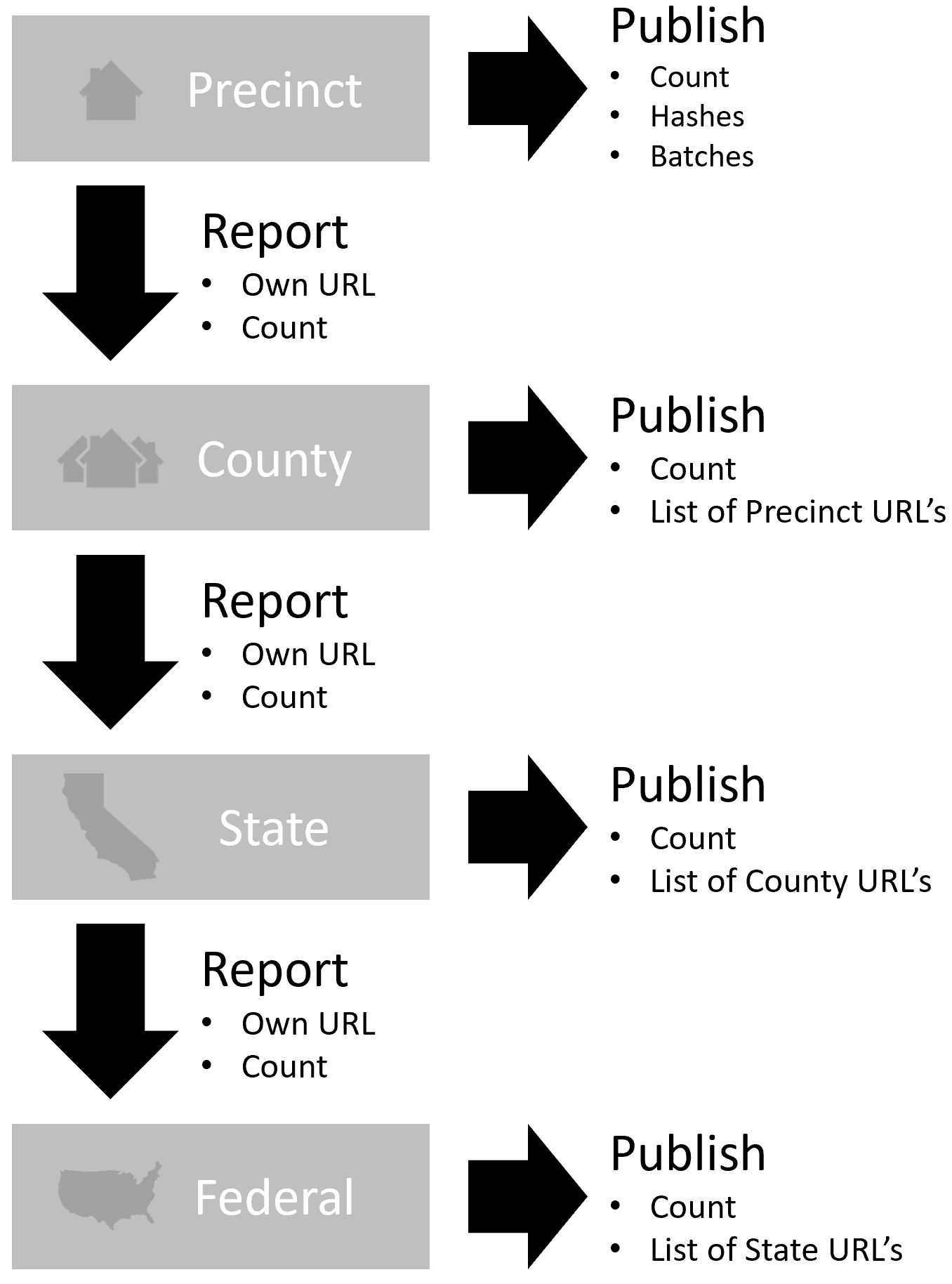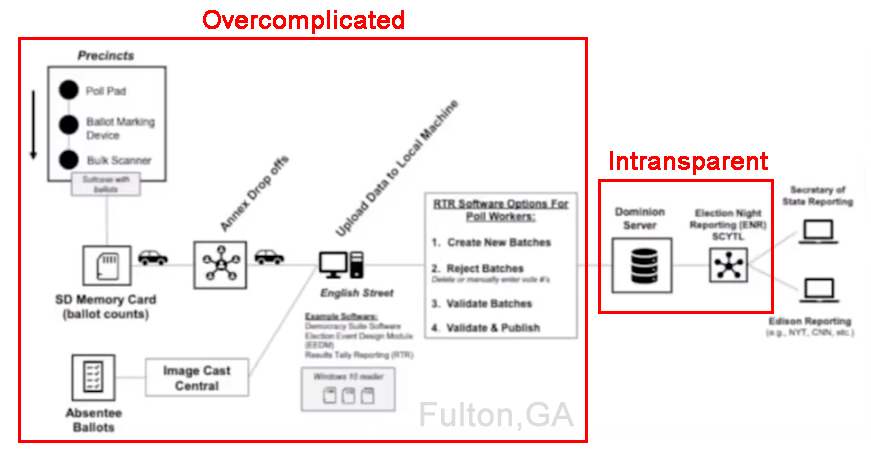reduces the attack chances of votes swapped in transfer and falsely reported counts.
It aims to have an accessible public account of the vote in real time.
A linked list gains transparency from traceability.
For full forward and backwards traceability in the publishing chain every node (e.g. precinct, county, state, federal) needs to
- publish its own data,
- separately report this data to the next level above it and
- link back to all entries in the level below it.
Publishing needs to be done by means of a simple web server at every node. Having info on processed ballots and counts public for everyone to check makes it incredibly difficult for an attacker to swap votes or report false result at any point in the tabulation process.

Separate Reporting and Publishing processes are neccessary to be able to quickly cross-check data for potential attacks. The link schematic shown is demonstrated here in a rudimentary example with the State of Arizona.
Notes
This is the current process involving Dominion, as shown at a hearing from the GA legislature:

Eventually you want to get rid of all electronic voting machines and replace them at the points where IT is useful and acceptable with off-the-shelf computers and open source software. This is not only cheap to procure but easy to maintain. Everyone working in IT can set up a web server. The real challenges are
- voting machine manufacturers that will not want to go out of business and
- the bought & sold local officials in their service.
These people profit from the current system and will certainly not go out without a fight.
Angles of Attack
Corrupted machines report false results (Low)
People on-site need to periodically check that recorded & published figures are identical. The burden for correct counts is entirely at the precincts as all higher up aggregates derive solely from them.